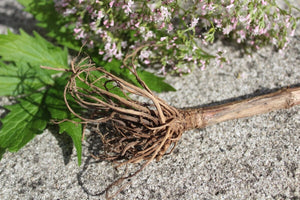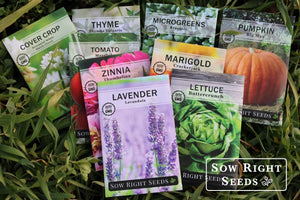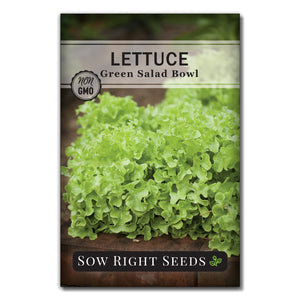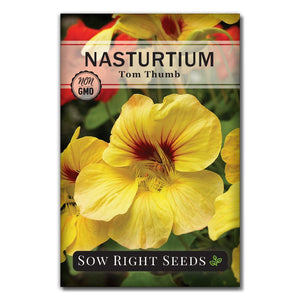What Is Seed Scarification? Why Your Seeds May Need This Wake-up Call
Starting seedsYou may be wondering what is scarification and why some seeds require it. Scarification is the process of intentionally damaging the outside of a seed coating so that the seed “wakes up” and knows it’s time to start the germination process.

Seed Scarification in Nature
Seeds that need scarification have adapted to develop a tough, waterproof, and gas-proof seed coat. This hard seed coat protects the inner seed from germinating before the right conditions are present. Eventually, that impermeable outer seed coat will need to be softened enough that the seed inside can start growing.
In nature, scarification can occur through various natural processes such as exposure to extreme temperatures, freezing and thawing cycles, mechanical abrasion from animals or soil, and the enzymes in the digestive tracts of animals. These natural methods gradually break down the seed coat, promoting germination.
The seeds lie dormant through winter, where they are subjected to natural forms of scarification. Freezing temperatures cause the outer coating to expand and contract until it is damaged enough for water to get through. Wind, rain, and the footsteps of humans and animals cause wear and tear that scuffs up the seed coat.
Some seeds are naturally scarified by going through the digestive tract of birds and other animals that eat them. The seed coats definitely have to be strong to protect the plant embryo until spring. Isn't nature amazing!

How to Scarify Seeds
For the home gardener, scarification requires a gentle touch. When scarifying seeds, you want to nick the seed coating by lightly roughing up the outer coating without damaging the seed within. There are several ways to do this.
Mechanical Seed Scarification Methods
Using tools is called mechanical scarification. You can use simple things you have around the house for tools to scarify seeds. For small seeds, sandpaper and nail files work well. For larger and harder seeds, you can use a metal file, nail clippers, and scissors.
Small seeds can be placed between sheets of sandpaper to rub off the outer surface. Your goal is to barely crack the outer coating, but not damage or crumble the seed within. This method works well for small white sage seeds.
For larger seeds with a tough seed coat, such as gourd seeds, you can use scissors or nail clippers to cut a tiny tip off the end.
Another technique is to put your seeds into a jar of gravel or sand and shake them to mimic the natural conditions that would naturally nick the seed coating.
Just remember you need to plant scarified seeds immediately. Once you've appropriately roughed up your seeds, the seed coat is no longer protecting the baby plant within, so it's important not to delay.

Scarification is not a necessary process for all seeds, so check to see if your seed actually needs scarification. Your seed packet will let you know if you need to rough your seeds up a little bit.
Most vegetable seeds don't need scarification. However, large seeds, such as gourds, can be nicked for faster seed germination.
Here are some seeds that benefit from scarification:
This video shows the simple tools and methods you can use for seed scarification at home.
Other Seed Scarification Methods
Soaking seeds is another scarification method. Seeds can be soaked for several hours in either cold or warm water. There is also hot water scarification, where water is brought to a boil. The seeds are added and then allowed to cool down and planted thereafter.
Some seeds need a combination of both mechanical scarification and soaking. Moonflower is one that you can clip off the end and then soak the seeds for 24 hours.
There are other methods of scarification used. Sometimes commercial seed is pretreated with chemicals such as sulfuric acid to thin the seed coating.
Mechanical scarification is the most practical method for the home gardener, with a better chance of success. Always check your seed packet to see what method is best.

Stratification is similar to seed scarification and can also improve germination rates in some seeds. Cold-stratified seeds are kept in temperatures for an extended period of time to simulate the cold and wet of winter. Milkweed is an example of a seed that needs cold stratification. The change in temperatures acts as a signal that it’s time to wake up from winter dormancy.
Seed scarification may sound scary, but it's a natural process for seeds that need a wake-up call. For those seeds that need it, taking a little time and effort to nick the seed coating will greatly improve your chances of germination.
Additional Resources:
Oregon State - Seed Scarification
NC State - Overcoming Seed Dormancy: Trees and Shrubs
Written by Teresa Chandler








Leave a comment